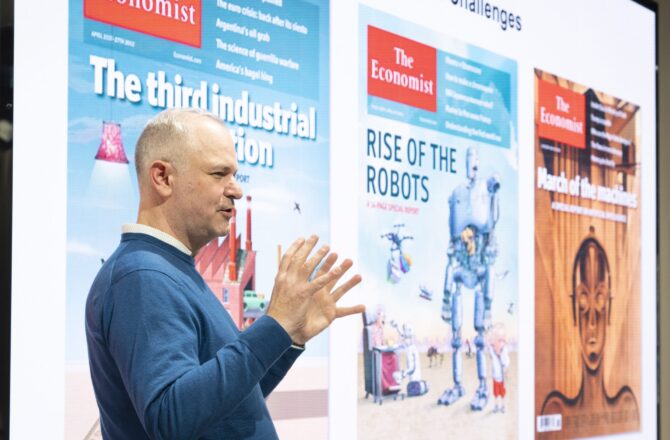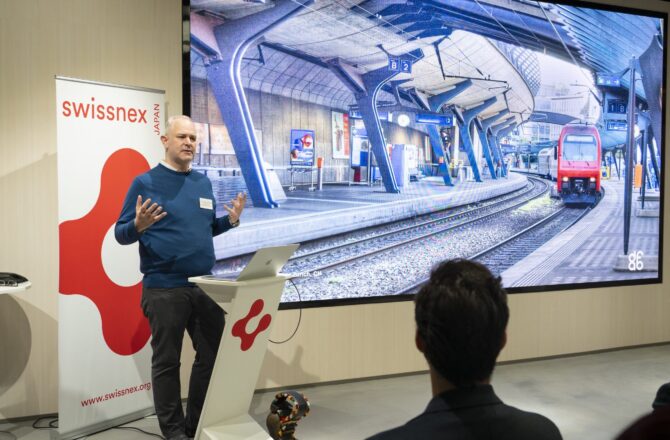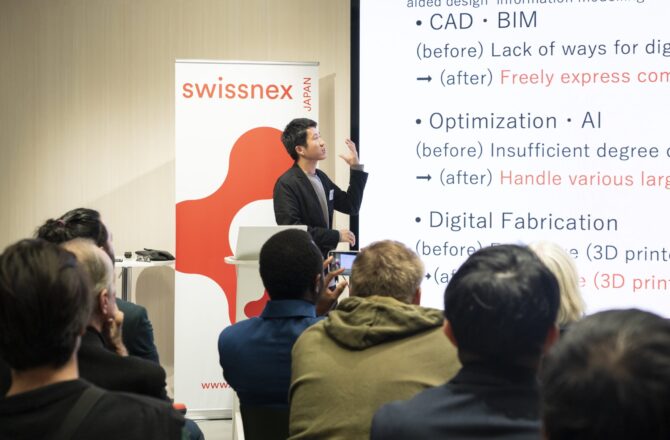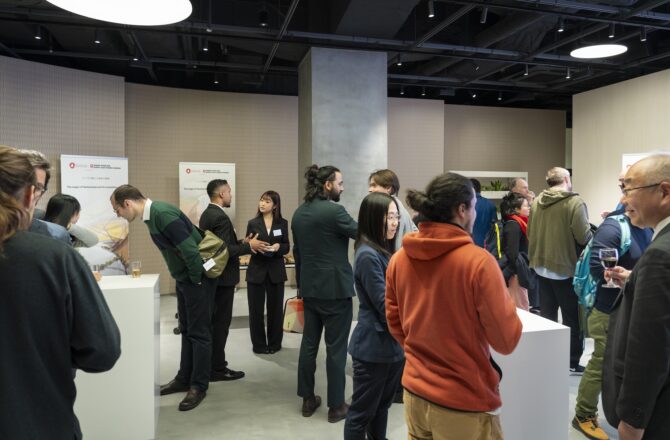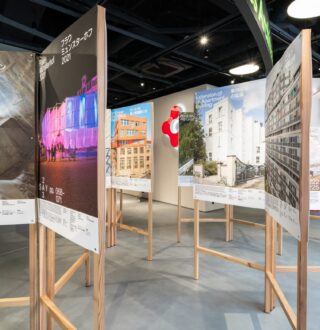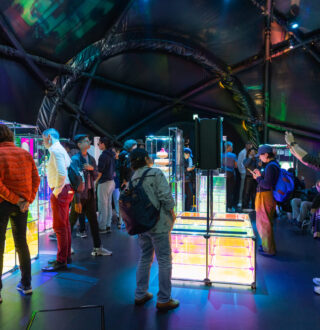
Fiammetta Pennisi
Shaping the Future of the Built Environment
Dr. Russell Loveridge, Managing Director of the Swiss National Centre of Competence in Research in Digital Fabrication (NCCR DFAB) at ETH Zurich, and Professor Kazuki Hayashi from Kyoto University provided cutting-edge insights into the evolving landscape of construction. Their presentations highlighted how robotics, AI, and advanced materials are transforming traditional building processes into more efficient and sustainable practices.
Switzerland’s Innovations in Digital Fabrication
Dr. Loveridge shared groundbreaking research from Switzerland, where NCCR DFAB integrates computational design, robotics, and material science to develop next-generation construction techniques. Key focus areas include:
Showcasing projects like the DFAB House, a pioneering residential building demonstrating six digital fabrication technologies, and the Future Tree, a robotically assembled wooden pergola supported by 3D-printed concrete columns, Dr. Loveridge illustrated how automation and AI-driven processes can significantly reduce material waste while improving structural performance.
AI and Computational Design: Japan’s Vision for Smart Construction
Professor Hayashi expanded on these ideas by highlighting AI’s role in industrialized construction. His research emphasizes computational structural design as a key driver for resilience and resource efficiency in urban environments. AI-powered models are optimizing structural designs, enhancing human-machine collaboration, and enabling a shift toward customized yet scalable architectural solutions.
A key challenge discussed was the balance between customization and standardization in construction. While AI allows for highly individualized designs, ensuring long-term scalability and maintenance remains a crucial consideration. Research in Japan also explores the use of recyclable materials like thermoplastics in formwork, addressing sustainability concerns while pushing the boundaries of material innovation.
Collaboration at the Core of Sustainable Innovation
The event reinforced the importance of international and interdisciplinary cooperation in tackling global challenges such as urbanization and climate change. As Switzerland and Japan continue to lead advancements in digital fabrication, AI, and sustainable construction, cross-border dialogues like this event play a vital role in fostering innovation and forging new partnerships.
From AI-guided robotics on construction sites to the development of novel sustainability metrics, the discussions underscored how technology is not replacing human expertise, but augmenting it. As research progresses, the next frontier of construction will be defined by smarter, greener, and more adaptive building techniques—shaped by a fusion of human creativity and machine intelligence.




In collaboration with the Swiss Architecture Museum (S AM), Swissnex in Japan presents Swissnex Window #3: SAY Swiss Architecture Yearbook, Switzerland's first architecture yearbook. The publication features 36 selected projects from 129 nominations across the country. Initiated in 2023, this traveling exhibition fosters dialogue on pressing topics in Swiss architecture, such as sustainable construction, while highlighting the exceptional quality of Swiss architectural work.
The Swiss Pavilion program at Expo 2025 will showcase a variety of engaging activities, including Robo Food by EPFL, where edible robotic parts will be explored in an expert exchange; The Reality of Deep Fakes, also by EPFL, which bridges experts and the public in discussions about digital authenticity; SushiTech Startups by Swissnex, highlighting cutting-edge technologies in a start-up and industry exchange; Future of Cinema by HEAD (Geneva University of Art and Design), focusing on innovative trends in cinema; and Rethinking museum collections by ZHdK (Zurich University of the Arts), exploring the digitalization of cultural heritage and its accessibility through a targeted exchange.
Fiammetta Pennisi

